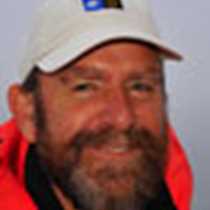Sutton Hoo, Ipswich, Suffolk
Last night was the longest leg of our journey so far: a steady 270 nautical miles from Lindisfarne in Northumberland. At dusk we were passing through the gas drilling rigs off the Humber estuary, bright flares against the failing light. Morning brought the first grey skies of our trip, but with the pilot on board we turned inland between the huge coastal ports of Harwich and Felixstowe to follow the Orwell River up to Ipswich.
Snaking eight miles up a narrowing tidal creek gave us fascinating glimpses of old England: the ancient spritsail barges at Pin Mill which used to sail with cargo to London, wealthy merchants houses among the old oaks, and plenty of wildlife: a flock of Canada geese on the saltmarsh and a group of 3 fallow deer which came down for a quick lick of the saltings.
We came as our English ancestors came before us, 1300 years ago, from the sea. They sailed in solid, shallow-draft oak vessels, having crossed the North Sea from Europe. Jutes from Denmark, Angles and Saxons from northern Germany, they rowed up the Orwell to establish new farms and settlements in the eastern counties. The Romans had withdrawn from Britain in the 5th century, leaving a power vacuum which these bold sailors, warriors and farmers were eager to fill.
Their leader, Raedwald was both warrior and diplomat, who united the Germanic tribes of eastern Britain and received a sumptuous burial site above the estuary on a high sandy ridge or “Hoo” at the south village “Sutton”. In keeping with his stature, he was buried with his 90’ boat, weapons, jewelry, horses, cloak, food and a helmet which was to dazzle the people who finally unearthed it.
Body, boat and bangles had lain intact for 13 centuries before the lady owner of the nearby house, Edith Pretty, became curious about the mounds on her ground. She was a spiritualist and in 1939 had a vision of people around the mounds which prompted her to engage a local archaeologist to excavate. When the digging revealed the perfect imprint of a huge wooden boat, the work quickly became a national sensation.
The start of World War Two halted the work, the site was filled in to protect it, and miraculously survived its use as a tank-training area. Post-war work and careful analysis has proved just how extraordinary this find is. All the finds, including the iconic helmet, are now in the British Museum but we were treated to superb recreation of the life and times of Raedwald in the Sutton Hoo exhibition centre, and walked out through oak and sweet chestnut trees to stand on the mound itself.
To a soundtrack of singing skylarks, yellowhammer and goldfinch, we heard the whole story from a very eloquent Suffolk guide, no doubt a descendant of those same Angle immigrants. They gave their name to the area (East Anglia), the language, English and thus to our green and pleasant land, England.
Last night was the longest leg of our journey so far: a steady 270 nautical miles from Lindisfarne in Northumberland. At dusk we were passing through the gas drilling rigs off the Humber estuary, bright flares against the failing light. Morning brought the first grey skies of our trip, but with the pilot on board we turned inland between the huge coastal ports of Harwich and Felixstowe to follow the Orwell River up to Ipswich.
Snaking eight miles up a narrowing tidal creek gave us fascinating glimpses of old England: the ancient spritsail barges at Pin Mill which used to sail with cargo to London, wealthy merchants houses among the old oaks, and plenty of wildlife: a flock of Canada geese on the saltmarsh and a group of 3 fallow deer which came down for a quick lick of the saltings.
We came as our English ancestors came before us, 1300 years ago, from the sea. They sailed in solid, shallow-draft oak vessels, having crossed the North Sea from Europe. Jutes from Denmark, Angles and Saxons from northern Germany, they rowed up the Orwell to establish new farms and settlements in the eastern counties. The Romans had withdrawn from Britain in the 5th century, leaving a power vacuum which these bold sailors, warriors and farmers were eager to fill.
Their leader, Raedwald was both warrior and diplomat, who united the Germanic tribes of eastern Britain and received a sumptuous burial site above the estuary on a high sandy ridge or “Hoo” at the south village “Sutton”. In keeping with his stature, he was buried with his 90’ boat, weapons, jewelry, horses, cloak, food and a helmet which was to dazzle the people who finally unearthed it.
Body, boat and bangles had lain intact for 13 centuries before the lady owner of the nearby house, Edith Pretty, became curious about the mounds on her ground. She was a spiritualist and in 1939 had a vision of people around the mounds which prompted her to engage a local archaeologist to excavate. When the digging revealed the perfect imprint of a huge wooden boat, the work quickly became a national sensation.
The start of World War Two halted the work, the site was filled in to protect it, and miraculously survived its use as a tank-training area. Post-war work and careful analysis has proved just how extraordinary this find is. All the finds, including the iconic helmet, are now in the British Museum but we were treated to superb recreation of the life and times of Raedwald in the Sutton Hoo exhibition centre, and walked out through oak and sweet chestnut trees to stand on the mound itself.
To a soundtrack of singing skylarks, yellowhammer and goldfinch, we heard the whole story from a very eloquent Suffolk guide, no doubt a descendant of those same Angle immigrants. They gave their name to the area (East Anglia), the language, English and thus to our green and pleasant land, England.




